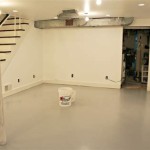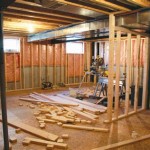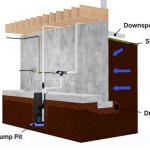Partial Basement vs Crawl Space: Understanding the Differences
When constructing a new home or renovating an existing one, one of the crucial decisions involves choosing between a basement, a crawl space, or a combination of both. A partial basement, as the name suggests, is a partially finished basement where only a portion is below ground level. This differs from a full basement, which is entirely underground. A crawl space, on the other hand, is a small, unconditioned space under the house, typically accessed through a hatch in the floor. Understanding the advantages and disadvantages of each option is essential for making informed decisions about your home's foundation.
Advantages and Disadvantages of a Partial Basement
A partial basement offers a blend of features found in both full basements and crawl spaces. Here are some key advantages and disadvantages:
Advantages:
- Increased Living Space: A partial basement provides additional living space, which can be used for various purposes like a family room, a home office, or a play area. This can be valuable for homeowners seeking to maximize their usable space.
- Storage: With a partial basement, you can utilize the unfinished portion for storage purposes, keeping items organized and off the main living floor.
- Foundation Stability: A partial basement offers a more stable foundation compared to a crawl space. The concrete walls provide support and stability to the structure.
- Potential for Natural Light: Depending on its design and location, a partial basement can receive more natural light compared to a full basement. This makes the space more inviting and functional.
Disadvantages:
- Higher Construction Costs: Building a partial basement is generally more expensive than a crawl space. This is due to the need for excavation, concrete walls, and potentially more complex plumbing and electrical work.
- Limited Living Space Compared to Full Basement:A partial basement provides less living space than a full basement.
- Moisture Concerns: Like full basements, partial basements are prone to moisture issues. Proper drainage and ventilation are crucial to prevent mold and mildew growth.
Advantages and Disadvantages of a Crawl Space:
A crawl space provides a less expensive alternative to a basement but comes with limitations. Here are some key advantages and disadvantages:
Advantages:
- Lower Construction Costs: Crawl spaces are generally more affordable to build than a basement, as they require less excavation and concrete work.
- Easier Access for Repairs: Crawl spaces provide easier access to plumbing and electrical lines, simplifying maintenance and repairs.
- Minimal Impact on Existing Structures: In situations where space is limited or surrounding structures are present, a crawl space might be the only feasible option.
Disadvantages:
- Limited Space: Crawl spaces offer minimal space for storage or living areas. They are primarily used for accessing utilities.
- Moisture and Ventilation Issues: Crawl spaces are prone to moisture problems, particularly in humid climates. Poor ventilation can lead to mold, mildew, and pest infestations.
- Difficult to Access: The small hatch access can make it challenging to move large items or work comfortably in a crawl space.
- Less Stable Foundation: Compared to a basement, a crawl space provides less foundation stability, potentially leading to settling issues over time.
Factors to Consider When Making a Decision:
Several factors influence the best choice between a partial basement and a crawl space. The ideal solution depends on your specific needs and circumstances. Here are key aspects to consider:
- Budget: Consider the construction costs associated with each option, including excavation, concrete work, and utilities. Crawl spaces generally have lower upfront costs compared to a partial basement.
- Living Space Needs: Evaluate your need for additional living space. A partial basement offers a more usable space than a crawl space but less than a full basement.
- Climate: The local climate plays a crucial role. In humid regions, both partial basements and crawl spaces require proper ventilation and moisture control to prevent problems.
- Soil Conditions: If the soil on your property is unstable or prone to flooding, a basement might be a better choice for foundation stability.
Ultimately, the decision between a partial basement and a crawl space is personal. Carefully weigh the advantages and disadvantages of each option, consider your budget, and prioritize your needs to make the best choice for your home.

The Crawlspace Argument Open Vented Vs Closed Encapsulated Myhomescience

What Is A Partial Basement Heartland Inspections

Do You Wonder What Is A Crawl Space This Should Know

Partial Basements Ideas For Getting More Out Of A Basement

Insulating Basement With Partial Crawlspace General Inspection Topics Internachi Forum

Crawl Space Vs Basement Costs Pros Cons

What Is A Partial Basement Heartland Inspections

4 Basement Types Discover Which Is Right For You

The Low Down Crawl Spaces Vs Basements 2024 Pros

Insulating And Finishing Partial Basement With New Attached Crawlspace Greenbuildingadvisor
Related Posts







